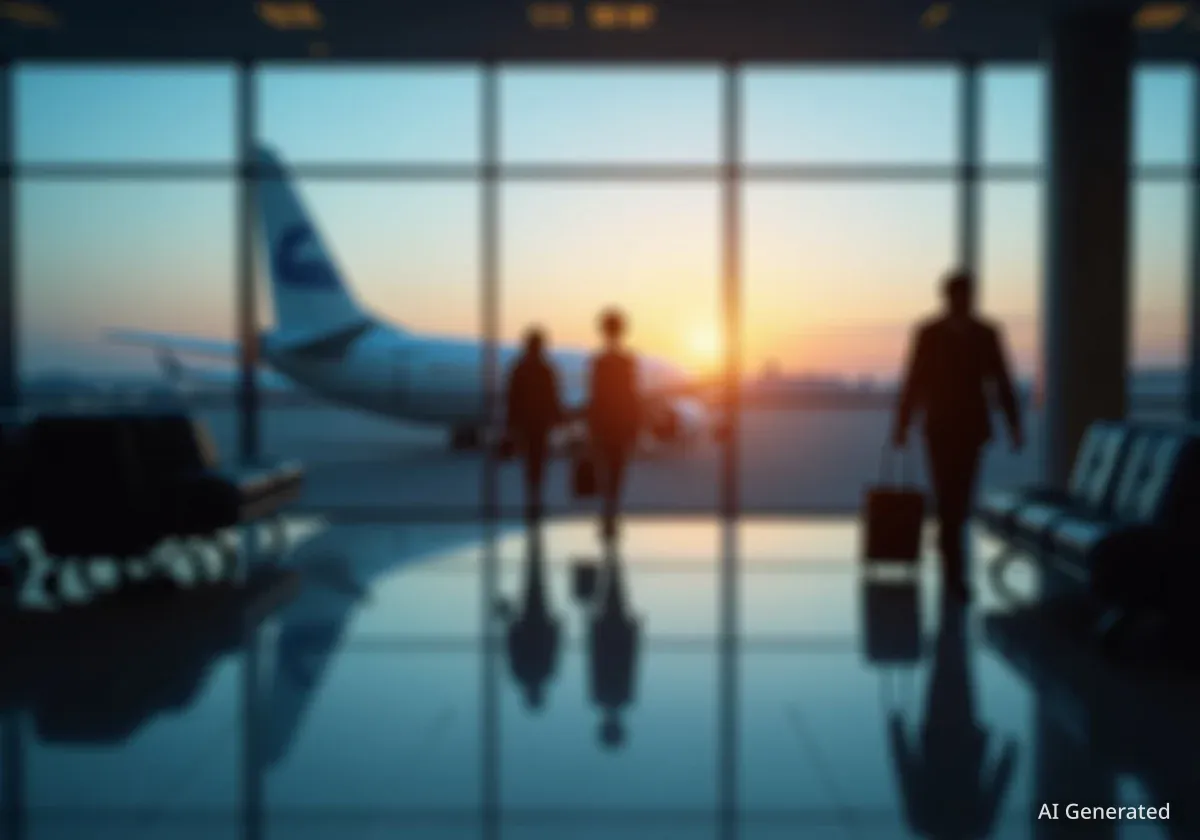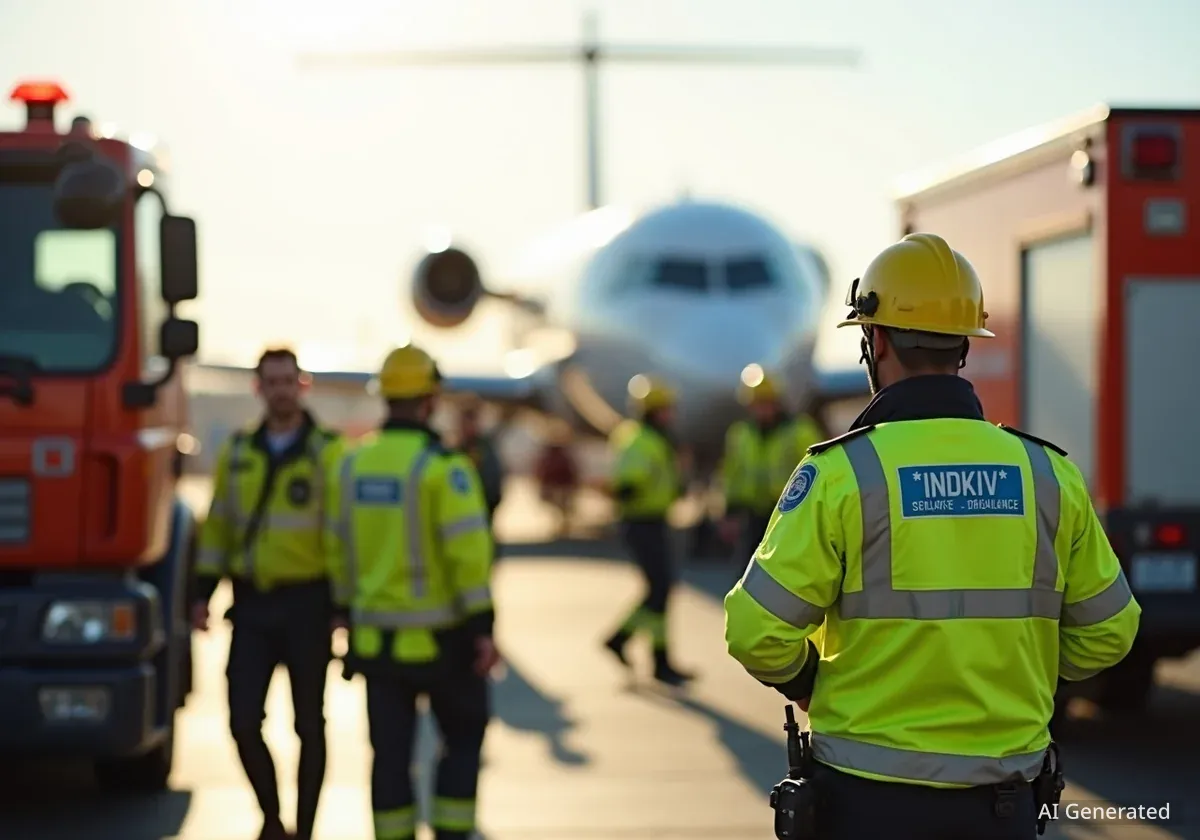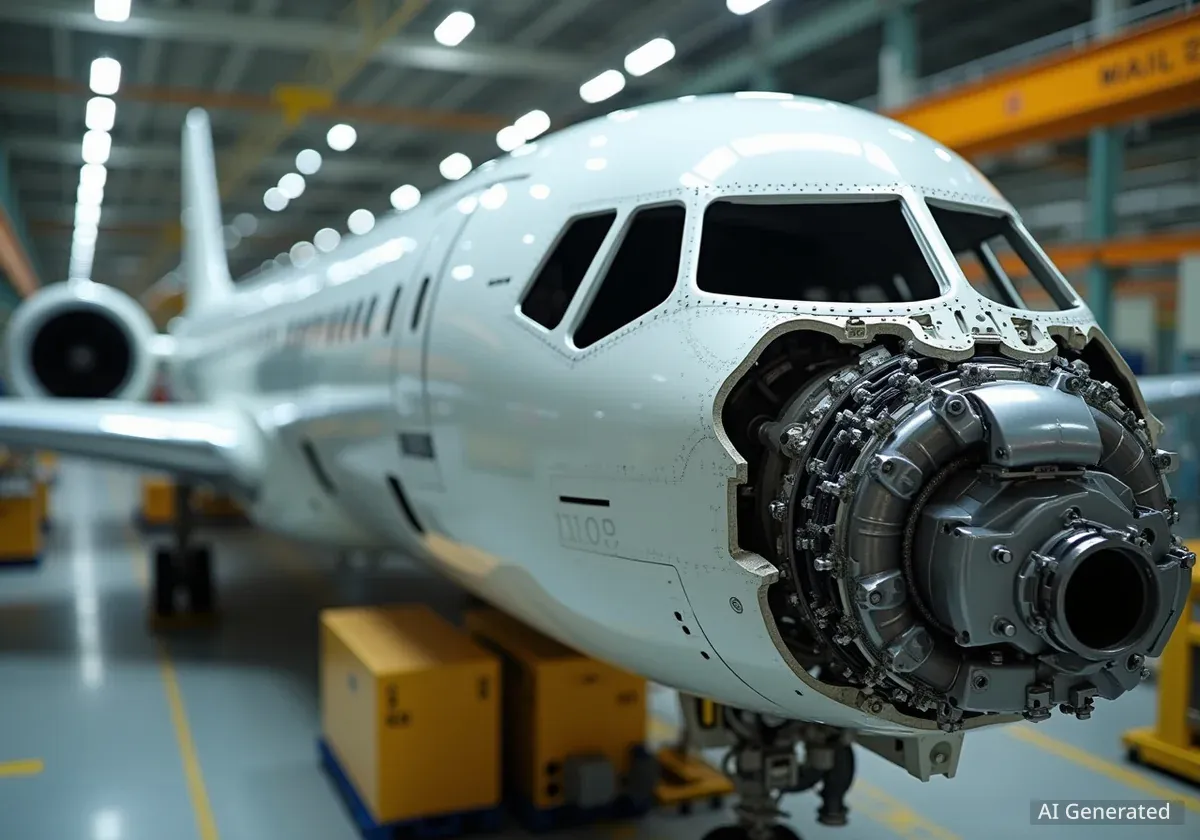The United States Department of Transportation (DOT) is evaluating a potential ban on Chinese airlines that fly through Russian airspace. This move aims to address a competitive imbalance. The imbalance affects American carriers on routes between the U.S. and China. This situation arose after Russia restricted its airspace to Western aircraft following sanctions related to the conflict in Ukraine.
The proposed ban would specifically target Chinese flights that currently use Russian airspace. American airlines, unable to use these routes, face longer travel times. These longer routes increase operational costs and reduce passenger appeal. The DOT's consideration highlights ongoing trade tensions and strategic competition between the two global powers.
Key Takeaways
- U.S. DOT considering ban on Chinese airlines using Russian airspace.
- Aim is to level competition for American carriers on U.S.-China routes.
- Russian airspace is closed to Western airlines due to Ukraine sanctions.
- Chinese airlines currently benefit from shorter routes through Russia.
- The proposal could impact existing flight agreements and passenger travel.
Impact of Airspace Restrictions on Competition
Since the sanctions against Russia, Western aircraft, including those from the United States, have been prohibited from flying over Russian territory. This closure affects routes to various destinations, including China. For American airlines, flights to China now require significantly longer routes. These longer paths mean increased fuel consumption and extended flight times.
Conversely, Chinese airlines do not face the same restrictions. They can continue to use Russian airspace for their flights to and from China. This access provides them with a direct and shorter route. The difference in flight duration creates a competitive advantage for Chinese carriers. Passengers often prefer shorter travel times, which can lead to Chinese airlines attracting more customers on these routes.
"The Kremlin closed off its skies to Western aircraft after sanctions over the invasion of Ukraine; thus, flights from the U.S. have to take a longer route to reach China. Russia doesn't restrict Chinese flights, however, giving those airlines shorter flight times and attracting more passengers."
This situation has prompted U.S. officials to consider regulatory action. The goal is to ensure fair competition. The DOT aims to prevent Chinese airlines from benefiting from an operational advantage that American carriers cannot access.
Flight Time Discrepancy
American airlines flying from the U.S. to China face extended flight times, adding several hours to their journeys. This directly impacts operational costs and passenger convenience.
Previous Agreements and Current Considerations
The issue of Chinese airlines using Russian airspace is not entirely new. In 2023, the DOT reached an agreement with several Chinese airlines. This agreement allowed them to increase their flight frequencies to the U.S. However, a key condition was that these new flights had to avoid Russian airspace.
Despite this, some Chinese flights that were already operating before the 2023 agreement continued to use Russian airspace. These are the specific flights now under review. The proposed ban would target these existing routes. This would bring them into alignment with the restrictions imposed on newer flights and on American carriers.
Historical Context of U.S.-China Air Travel
Before the COVID-19 pandemic, approximately 150 flights operated weekly between North America and China. During the pandemic, the U.S. government significantly reduced this number to just 35 flights per week. In 2024, this limit was increased to 50 flights weekly. This shows that flight frequency between the two regions is often subject to policy decisions, not just market demand.
The U.S. government views this as a matter of policy, not coincidence. The ongoing trade relationship between the U.S. and China often influences aviation policies. These policies can affect the number of available flights and the operational conditions for airlines.
Operational Challenges for American Carriers
The longer flight paths for American airlines present several operational challenges. Beyond the increased fuel costs, these extended routes also mean longer duty times for crew members. This can lead to higher labor costs and more complex scheduling.
Furthermore, longer flights often require aircraft to carry more fuel. This additional weight can necessitate reductions in other areas, such as passenger luggage allowances or cargo capacity. These restrictions can make American flights less attractive to passengers and shippers. They can also reduce potential revenue for airlines.
- Increased Fuel Costs: Longer routes require more fuel, directly increasing operational expenses.
- Extended Flight Times: Passengers may opt for shorter routes offered by competitors.
- Weight Restrictions: More fuel means less capacity for luggage or cargo, impacting revenue.
- Crew Scheduling: Longer flights complicate crew duty limits and rest periods.
These challenges put American carriers at a significant disadvantage. They must compete with airlines that operate under different conditions. The proposed ban aims to mitigate these disadvantages.
Industry Reactions and Future Outlook
The proposal has generated varied reactions within the airline industry. Chinese carriers are predictably arguing against the implementation of such a rule. They maintain that it would unfairly impact their operations and potentially disrupt existing travel plans.
Conversely, some American airlines support the measure. United Airlines, for instance, has advocated for more foreign airlines to be subjected to similar restrictions. This stance highlights the desire among U.S. carriers for a level playing field.
This situation could also be part of broader diplomatic and economic discussions between the U.S. and China. Trade negotiations often involve various sectors, including transportation. The possibility exists that this proposed rule may not be fully implemented. It could serve as a bargaining tool in ongoing talks.
Ultimately, a resolution to the airspace restrictions could also come from Russia. If Russia were to reopen its skies to Western aircraft, the competitive imbalance would naturally diminish. However, this depends on geopolitical developments related to the conflict in Ukraine.
The DOT’s consideration reflects the complex interplay of international relations, economic competition, and aviation policy. Travelers between the U.S. and China may see further changes in flight options and travel times depending on the outcome of these discussions.





